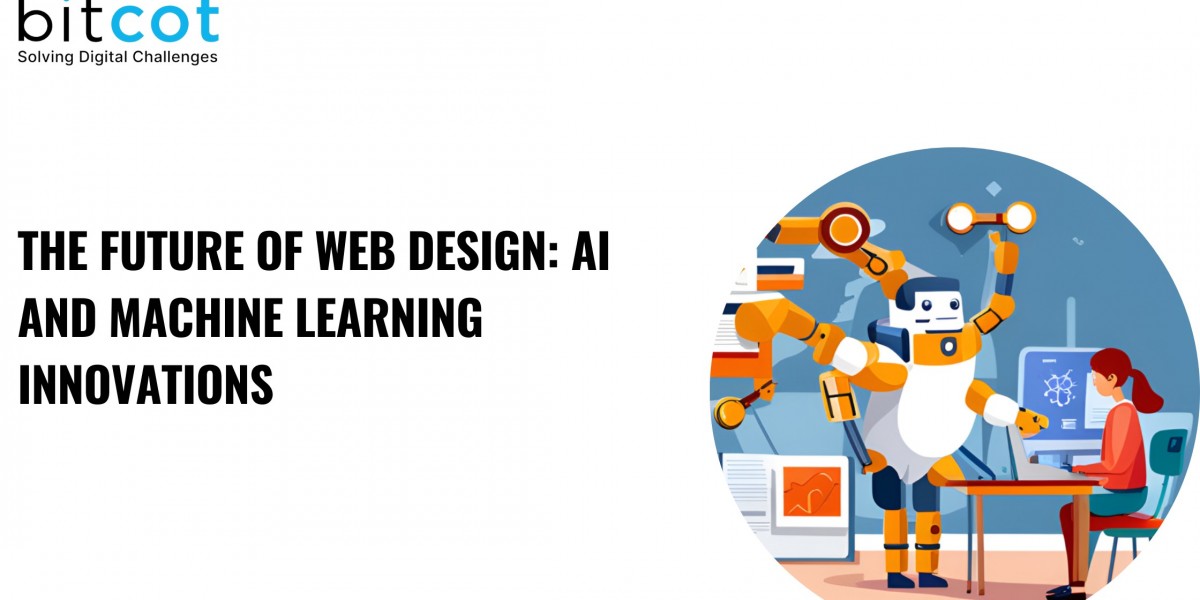The world of web design is ever-evolving, with technological advancements continually reshaping how we create and interact with websites. Artificial Intelligence (AI) and Machine Learning (ML) are among the most transformative technologies. These innovations are enhancing the efficiency of web design processes and revolutionizing user experiences. This blog explores how AI and ML are shaping the future of web design and what this means for designers, businesses, and users alike.
AI and ML: A Brief Overview
Artificial Intelligence (AI) refers to the capability of machines to mimic human intelligence, performing tasks that typically require human cognition, such as learning, reasoning, and problem-solving.
Machine Learning (ML) a subset of AI, involves algorithms that enable computers to learn from and make predictions based on data.
In web design, these technologies are leveraged to automate tasks, personalize user experiences, and create more efficient design processes. Let’s delve into specific areas where AI and ML are making significant impacts.
Automated Design Processes
One of the most notable contributions of AI and ML to web design is the automation of repetitive and time-consuming tasks. AI-powered design tools, such as Wix’s ADI (Artificial Design Intelligence) and Adobe’s Sensei, can automatically generate website layouts based on user preferences and industry standards. These tools can handle various aspects of web design, from selecting color schemes and fonts to arranging content and images.
Benefits:
Speed: AI tools can create initial website designs in a fraction of the time it takes a human designer.
Cost Efficiency: Reducing the time and effort involved in web design lowers costs for businesses.
Consistency: AI ensures design consistency across different web pages and platforms.
Personalized User Experiences
AI and ML excel in analyzing vast amounts of data to understand user behavior and preferences. This capability is being harnessed to create highly personalized web experiences. For instance, AI algorithms can track user interactions, such as clicks, scrolls, and time spent on pages, to tailor content and design elements that best suit individual users.
Benefits:
Improved User Engagement: Personalized experiences keep users engaged and more likely to return.
Higher Conversion Rates: Tailoring content and calls to action to individual preferences can boost conversion rates.
Enhanced User Satisfaction: Providing relevant content and seamless navigation enhances overall user satisfaction.
Intelligent Content Creation and Management
AI-driven tools are also transforming content creation and management. Natural Language Processing (NLP) algorithms can generate high-quality content, suggest relevant keywords, and optimize text for search engines. Additionally, AI can help in managing and organizing content by categorizing it based on topics and relevance.
Benefits:
Efficiency: Automating content creation saves time and effort for designers and content creators.
SEO Optimization: AI can optimize content for better search engine rankings.
Relevance: AI ensures that content remains relevant to user interests and trends.
Enhanced Design Tools
AI and ML are enhancing traditional design tools, making them more powerful and intuitive. For example, tools like Sketch and Figma are incorporating AI features to assist designers in their workflows. These features can suggest design improvements, predict design trends, and even generate design elements based on simple inputs.
Benefits:
Assistance: AI acts as an assistant, providing suggestions and insights to improve design quality.
Innovation: AI-driven insights can inspire new design ideas and trends.
Collaboration: Enhanced tools facilitate better collaboration among design teams.
Predictive Design and Analytics
ML algorithms can analyze user data to predict future trends and user behavior. This predictive capability allows designers to create websites that anticipate user needs and preferences, leading to more proactive and responsive design strategies.
Benefits:
Proactive Design: Anticipating user needs leads to more responsive and user-friendly designs.
Data-Driven Decisions: Predictive analytics provide valuable insights for informed design decisions.
Trend Identification: Identifying emerging trends helps in staying ahead of the competition.
Voice User Interfaces (VUIs)
The rise of voice-activated devices has spurred the development of Voice User Interfaces (VUIs). AI and ML are crucial in creating these interfaces, enabling users to interact with websites through voice commands. This development is particularly significant for accessibility, as it allows users with disabilities to navigate websites more easily.
Benefits:
Accessibility: VUIs make websites more accessible to users with disabilities.
Convenience: Voice commands offer a convenient and hands-free way to interact with websites.
Innovation: VUIs represent a new frontier in web design, pushing the boundaries of traditional interfaces.
Challenges and Considerations
While AI and ML bring numerous benefits to web design, they also present challenges. Ethical considerations, such as data privacy and algorithmic bias, must be addressed. Additionally, the reliance on AI should not undermine the creativity and unique touch that human designers bring to their work. Balancing automation with human creativity is crucial for achieving the best outcomes.
Key Considerations:
Ethics: Ensuring AI applications adhere to ethical standards and respect user privacy.
Creativity: Maintaining a balance between automated processes and human creativity.
Bias: Addressing and mitigating algorithmic biases to ensure fairness and inclusivity.
Conclusion
AI and ML are undeniably transforming the future of web design, offering tools and capabilities that enhance efficiency, personalization, and innovation. As these technologies continue to evolve, they will undoubtedly play an even more significant role in shaping how we create and interact with websites. Embracing AI and ML in web design not only enhances the user experience but also pushes the boundaries of what is possible, leading to a more dynamic and responsive digital landscape. By integrating these technologies thoughtfully and ethically, we can create websites that are not only functional and beautiful but also intelligent and user-centric.
Also Read: 15 Best Web Application Design Examples for Inspiration








